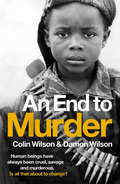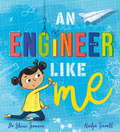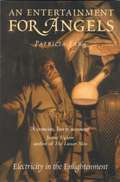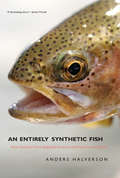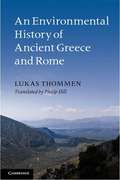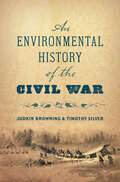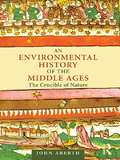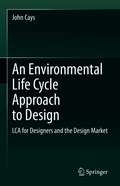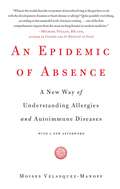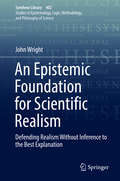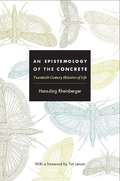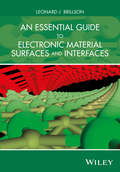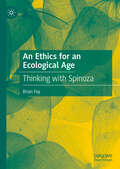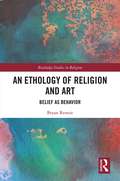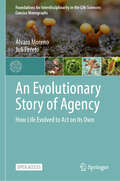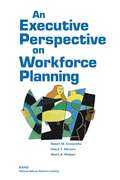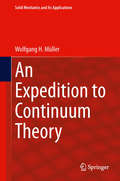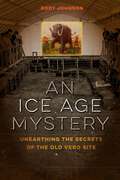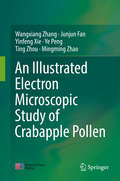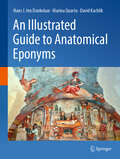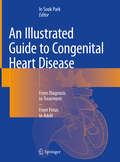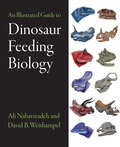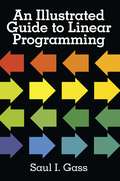- Table View
- List View
An End To Murder: Human beings have always been cruel, savage and murderous. Is all that about to change?
by Colin Wilson Damon WilsonCreatively and intellectually there is no other species that has ever come close to equalling humanity’s achievements, but nor is any other species as suicidally prone to internecine conflict. We are the only species on the planet whose ingrained habit of conflict constitutes the chief threat to our own survival. Human history can be seen as a catalogue of cold-hearted murders, mindless blood-feuds, appalling massacres and devastating wars, but, with developments in forensic science and modern psychology, and with raised education levels throughout the world, might it soon be possible to reign in humanity’s homicidal habits? Falling violent crime statistics in every part of the world seem to indicate that something along those lines might indeed be happening. Colin and Damon Wilson, who between them have been covering the field of criminology for over fifty years, offer an analysis of the overall spectrum of human violence. They consider whether human beings are in reality as cruel and violent as is generally believed and they explore the possibility that humankind is on the verge of a fundamental change: that we are about to become truly civilised. As well as offering an overview of violence throughout our history – from the first hominids to the twenty-first century, touching on key moments of change and also indicating where things have not changed since the Stone Age – they explore the latest psychological, forensic and social attempts to understand and curb modern human violence. To begin with, they examine questions such as: Were the first humans cannibalistic? Did the birth of civilisation also lead to the invention of war and slavery? Priests and kings brought social stability, but were they also the instigators of the first mass murders? Is it in fact wealth that is the ultimate weapon? They look at slavery and ancient Roman sadism, but also the possibility that our own distaste for pain and cruelty is no more than a social construct. They show how the humanitarian ideas of the great religious innovators all too quickly became distorted by organised religious structures. The book ranges widely, from fifteenth-century Baron Gilles de Rais, ‘Bluebeard’, the first known and possibly most prolific serial killer in history, to Victorian domestic murder and the invention of psychiatry and Sherlock Holmes and the invention of forensic science; from the fifteenth-century Taiping Rebellion in China, in which up to 36 million died to the First and Second World Wars and more recent genocides and instances of ‘ethnic cleansing’, and contemporary terrorism. They conclude by assessing the very real possibility that the internet and the greater freedom of information it has brought is leading, gradually, to a profoundly more civilised world than at any time in the past.
An Engineer Like Me
by Dr Shini SomaraInventive illustrations and an empowering story combine to introduce young readers to the world of engineering, creative thinking and problem-solving.Zara is curious about everything! Travelling around the city with her gran, she sees all kinds of fascinating things. How do roller coasters do loop-the-loops? How do planes stay up? As she marvels about how they work, Zara learns about some of the brilliant engineers who have shaped the world around her. Soon she can't wait to start creating her own amazing inventions and become an engineer too!With pages encouraging kids to try out their very own engineering experiments such as constructing the perfect paper aeroplane and safely dropping an egg from a height, this brilliant picture book written by engineer and TV presenter Dr Shini Somara unlocks a love of engineering and celebrates women in STEM.The first book in an exciting new series. Still to come:- A Scientist Like Me- A Coder Like Me- A Mathematician Like Me
An Entertainment for Angels: Electricity in the Enlightenment
by Patricia FaraCharacterizing electricity as "the greatest scientific invention of the Enlightenment," Fara (history of science, U. of Cambridge, UK) reconstructs the history of the discovery of electricity that pre- existed Benjamin Franklin's oft-cited kite. It is a history in which the instruments largely preceded the theory and "there was no clear path of development." Nevertheless, the development of those instruments, especially air pumps and Leyden jars, was absolutely necessary for later discoveries about electricity. Annotation ©2004 Book News, Inc., Portland, OR (booknews.com)
An Entirely Synthetic Fish
by Anders HalversonAnders Halverson provides an exhaustively researched and grippingly rendered account of the rainbow trout and why it has become the most commonly stocked and controversial freshwater fish in the United States. Discovered in the remote waters of northern California, rainbow trout have been artificially propagated and distributed for more than 130 years by government officials eager to present Americans with an opportunity to get back to nature by going fishing. Proudly dubbed "an entirely synthetic fish" by fisheries managers, the rainbow trout has been introduced into every state and province in the United States and Canada and to every continent except Antarctica, often with devastating effects on the native fauna. Halverson examines the paradoxes and reveals a range of characters, from nineteenth-century boosters who believed rainbows could be the saviors of democracy to twenty-first-century biologists who now seek to eradicate them from waters around the globe. Ultimately, the story of the rainbow trout is the story of our relationship with the natural world--how it has changed and how it startlingly has not.
An Environmental History of Ancient Greece and Rome
by Lukas Thommen Philip HillIn ancient Greece and Rome an ambiguous relationship developed between man and nature, and this decisively determined the manner in which they treated the environment. On the one hand, nature was conceived as a space characterized and inhabited by divine powers, which deserved appropriate respect. On the other, a rationalist view emerged, according to which humans were to subdue nature using their technologies and to dispose of its resources. This book systematically describes the ways in which the Greeks and Romans intervened in the environment and thus traces the history of the tension between the exploitation of resources and the protection of nature, from early Greece to the period of late antiquity. At the same time it analyses the comprehensive opening up of the Mediterranean and the northern frontier regions, both for settlement and for economic activity. The book's level and approach make it highly accessible to students and non-specialists.
An Environmental History of the Civil War (Civil War America)
by Judkin Browning Timothy SilverThis sweeping new history recognizes that the Civil War was not just a military conflict but also a moment of profound transformation in Americans' relationship to the natural world. To be sure, environmental factors such as topography and weather powerfully shaped the outcomes of battles and campaigns, and the war could not have been fought without the horses, cattle, and other animals that were essential to both armies. But here Judkin Browning and Timothy Silver weave a far richer story, combining military and environmental history to forge a comprehensive new narrative of the war's significance and impact. As they reveal, the conflict created a new disease environment by fostering the spread of microbes among vulnerable soldiers, civilians, and animals; led to large-scale modifications of the landscape across several states; sparked new thinking about the human relationship to the natural world; and demanded a reckoning with disability and death on an ecological scale. And as the guns fell silent, the change continued; Browning and Silver show how the war influenced the future of weather forecasting, veterinary medicine, the birth of the conservation movement, and the establishment of the first national parks. In considering human efforts to find military and political advantage by reshaping the natural world, Browning and Silver show not only that the environment influenced the Civil War's outcome but also that the war was a watershed event in the history of the environment itself.
An Environmental History of the Middle Ages: The Crucible of Nature
by John AberthThe Middle Ages was a critical and formative time for Western approaches to our natural surroundings. An Environmental History of the Middle Ages is a unique and unprecedented cultural survey of attitudes towards the environment during this period. Humankind’s relationship with the environment shifted gradually over time from a predominantly adversarial approach to something more overtly collaborative, until a series of ecological crises in the late Middle Ages. With the advent of shattering events such as the Great Famine and the Black Death, considered efflorescences of the climate downturn known as the Little Ice Age that is comparable to our present global warming predicament, medieval people began to think of and relate to their natural environment in new and more nuanced ways. They now were made to be acutely aware of the consequences of human impacts upon the environment, anticipating the cyclical, "new ecology" approach of the modern world. Exploring the entire medieval period from 500 to 1500, and ranging across the whole of Europe, from England and Spain to the Baltic and Eastern Europe, John Aberth focuses his study on three key areas: the natural elements of air, water, and earth; the forest; and wild and domestic animals. Through this multi-faceted lens, An Environmental History of the Middle Ages sheds fascinating new light on the medieval environmental mindset. It will be essential reading for students, scholars and all those interested in the Middle Ages
An Environmental History of the World: Humankind's Changing Role in the Community of Life
by J. Donal Hughes J. Donald HughesThis second edition of An Environmental History of the World continues to present a concise history, from ancient to modern times, of the interactions between human societies and the natural environment, including the other forms of life that inhabit our planet. Throughout their evolutionary history, humans have affected the natural environment, sometimes with a promise of sustainable balance, but also in a destructive manner. This book investigates the ways in which environmental changes, often the result of human actions, have caused historical trends in human societies. This process has happened in every historical period and in every part of the inhabited earth. The book is organized into ten chapters. The main chapters follow a chronological path through the history of mankind, in relationship to ecosystems around the world. The first explains what environmental history is, and argues for its importance in understanding the present state of the world's ecological problems. Chapters two through eight form the core of the historical analysis, each concentrating on a major period of human history (pre-civilized, early civilizations, classical, medieval, early modern, early and later twentieth century, and contemporary) that has been characterized by large-scale changes in the relationship between human societies and the biosphere, and each gives several case studies that illustrate significant patterns occurring at that time. The chapters covering contemporary times discuss the physical impacts of the huge growth in population and technology, and the human responses to these problems. Our moral obligations to nature and how we can achieve a sustainable balance between technology and the environment are also considered. This revised second edition takes account of new research and the course of history containing new sections on global warming, the response of New Orleans to the hurricanes Katrina and Rita, and the experience of the Dutch people in protecting their low-lying lands against the encroachments of rivers, lakes, and the North Sea. New material is also offered on the Pacific Islands, including the famous case of Easter Island. This is an original work that reaches further than other environmental histories. Rather than looking at humans and the environment as separate entities, this book places humans within the community of life. The relationship between environmental thought and actions, and their evolution, is discussed throughout. Little environmental or historical knowledge is assumed from the reader in this introduction to environmental history. We cannot reach a useful understanding of modern environmental problems without the aid of perspective provided by environmental history, with its illustrations of the ways in which past decisions helped or hindered the interaction between nature and culture. This book will be influential and timely to all interested in or researching the world in which we live.
An Environmental Life Cycle Approach to Design: LCA for Designers and the Design Market
by John CaysThis book introduces readers to Life Cycle Approach (LCA)-supported design solutions, through non-geometric-data-driven methodologies, to provide a clear picture of how to optimize individual designs in addressing ecological challenges. By offering LCA, the book gives designers a complimentary set of science-based perspectives and techniques with a focus on high data quality for clarity and public accessibility. While most design solutions and resources are meant to appeal to people by solving everyday problems, this book uses LCA designs to appeal to people through a combination of practicality, accuracy, and the need to decelerate ecological destruction through products offered to marketplace consumers. In essence, the book teaches designers how to craft environmentally responsive designs for their clients at little to no extra cost, but with necessary ecological benefits. The book analyzes the human desire for consumption, and suggests design innovations for promoting "best practices". LCA tools, data, and methodologies are explained and offered as these potential innovations for affecting positive environmental change. As an underlying component of LCA, the book defines the energy essentials related to environmental problems, and how LCA design solutions must address these factors while also appealing to a designated client-base. The book also teaches designers how to consider corporate incentives for trusting LCA designs, such as investor confidence, loyalty, and consumer trust. The book will appeal to a broad range of designers interested in sustainable and data-driven design, and may be utilized by non-LCA specialists in expanding their design perspectives and goals in the marketplace.
An Epidemic of Absence
by Moises Velasquez-ManoffA brilliant, cutting-edge exploration of the dramatic rise of allergic and autoimmune diseases and the controversial, potentially groundbreaking therapies that scientists are developing to correct these disorders Whether it is asthma, food or pollen allergies, type-1 diabetes, lupus, multiple sclerosis, or Crohn's disease, everyone knows someone who suffers from an allergic or autoimmune disorder. And if it appears that the prevalence of these maladies has increased recently, that's because it has--to levels never before seen in human history. These days no fewer than one in five--and likely more--Americans suffers from one of these ailments. We seem newly, and bafflingly, vulnerable to immune system malfunction. Why? Science writer Moises Velasquez-Manoff explains the latest thinking about this problem and explores the remarkable new treatments in the works. In the past 150 years, improved sanitation, water treatment, and the advent of vaccines and antibiotics have saved countless lives, nearly eradicating diseases that had plagued humanity for millennia. But now, a growing body of evidence suggests that the very steps we took to combat infections also eliminated organisms that kept our bodies in balance. The idea that we have systematically cleaned ourselves to illness challenges deeply entrenched notions about the value of societal hygiene and the harmful nature of microbes. Yet scientists investigating the rampant immune dysfunction in the developed world have inevitably arrived at this conclusion. To address this global "epidemic of absence," they must restore the human ecosystem. This groundbreaking book explores the promising but controversial "worm therapy"--deliberate infection with parasitic worms--in development to treat autoimmune disease. It explains why farmers' children so rarely get hay fever, why allergy is less prevalent in former Eastern Bloc countries, and how one cancer-causing bacterium may be good for us. It probes the link between autism and a dysfunctional immune system. It investigates the newly apparent fetal origins of allergic disease--that a mother's inflammatory response imprints on her unborn child, tipping the scales toward allergy. In the future, preventive treatment--something as simple as a probiotic--will necessarily begin before birth. An Epidemic of Absence asks what will happen in developing countries, which, as they become more affluent, have already seen an uptick in allergic disease: Will India end up more allergic than Europe? Velasquez-Manoff also details a controversial underground movement that has coalesced around the treatment of immune-mediated disorders with parasites. Against much of his better judgment, he joins these do-it-yourselfers and reports his surprising results. An Epidemic of Absence considers the critical immune stimuli we inadvertently lost as we modernized, and the modern ills we may be able to correct by restoring them. At stake is nothing less than our health, and that of our loved ones. Researchers, meanwhile, have the good fortune of living through a paradigm shift, one of those occasional moments in the progress of science when a radically new way of thinking emerges, shakes things up, and suggests new avenues of treatment. You'll discover that you're not you at all, but a bustling collection of organisms, an ecosystem whose preservation and integrity require the utmost attention and care.
An Epidemic of Absence: A New Way of Understanding Allergies and Autoimmune Diseases
by Moises Velasquez-ManoffA brilliant, cutting-edge exploration of the dramatic rise of allergic and autoimmune diseases and the controversial, potentially groundbreaking therapies that scientists are developing to correct these disorders Whether it is asthma, food or pollen allergies, type-1 diabetes, lupus, multiple sclerosis, or Crohn's disease, everyone knows someone who suffers from an allergic or autoimmune disorder. And if it appears that the prevalence of these maladies has increased recently, that's because it has--to levels never before seen in human history. These days no fewer than one in five--and likely more--Americans suffers from one of these ailments. We seem newly, and bafflingly, vulnerable to immune system malfunction. Why? Science writer Moises Velasquez-Manoff explains the latest thinking about this problem and explores the remarkable new treatments in the works. In the past 150 years, improved sanitation, water treatment, and the advent of vaccines and antibiotics have saved countless lives, nearly eradicating diseases that had plagued humanity for millennia. But now, a growing body of evidence suggests that the very steps we took to combat infections also eliminated organisms that kept our bodies in balance. The idea that we have systematically cleaned ourselves to illness challenges deeply entrenched notions about the value of societal hygiene and the harmful nature of microbes. Yet scientists investigating the rampant immune dysfunction in the developed world have inevitably arrived at this conclusion. To address this global "epidemic of absence," they must restore the human ecosystem. This groundbreaking book explores the promising but controversial "worm therapy"--deliberate infection with parasitic worms--in development to treat autoimmune disease. It explains why farmers' children so rarely get hay fever, why allergy is less prevalent in former Eastern Bloc countries, and how one cancer-causing bacterium may be good for us. It probes the link between autism and a dysfunctional immune system. It investigates the newly apparent fetal origins of allergic disease--that a mother's inflammatory response imprints on her unborn child, tipping the scales toward allergy. In the future, preventive treatment--something as simple as a probiotic--will necessarily begin before birth. An Epidemic of Absence asks what will happen in developing countries, which, as they become more affluent, have already seen an uptick in allergic disease: Will India end up more allergic than Europe? Velasquez-Manoff also details a controversial underground movement that has coalesced around the treatment of immune-mediated disorders with parasites. Against much of his better judgment, he joins these do-it-yourselfers and reports his surprising results. An Epidemic of Absence considers the critical immune stimuli we inadvertently lost as we modernized, and the modern ills we may be able to correct by restoring them. At stake is nothing less than our health, and that of our loved ones. Researchers, meanwhile, have the good fortune of living through a paradigm shift, one of those occasional moments in the progress of science when a radically new way of thinking emerges, shakes things up, and suggests new avenues of treatment. You'll discover that you're not you at all, but a bustling collection of organisms, an ecosystem whose preservation and integrity require the utmost attention and care.
An Epistemic Foundation for Scientific Realism: Defending Realism Without Inference To The Best Explanation (Synthese Library #402)
by John WrightThis monograph develops a new way of justifying the claims made by science about phenomenon not directly observable by humans, such as atoms and black holes. It details a way of making inferences to the existence and properties of unobservable entities and states of affairs that can be given a probabilistic justification. The inferences used to establish realist claims are not a form of, and neither do they rely on, inference to the best explanation. Scientific Realism maintains that scientific theories and hypotheses refer to real entities, forces, and relations, even if one cannot examine them. But, there are those who doubt these claims. The author develops a novel way of defending Scientific Realism against a range of influential attacks. He argues that in some cases, at least, we can make probabilistically justifiable inferences from observed data to claims about unobservable, theoretical entities. He shows how this enables us to place some scientific realist claims on a firmer epistemological footing than has previously been the case. This also makes it possible to give a unified set of replies to the most common objections to Scientific Realism. The final chapters apply the developed conceptual apparatus to key cases from the history of science and from recent science. One example concerns realism with respect to atoms. Another looks at inferences from recent astronomical data to conclusions about the size and shape of those parts of the universe lying beyond that which we can observe.
An Epistemology of the Concrete: Twentieth-Century Histories of Life
by Hans-Jörg RheinbergerAn Epistemology of the Concrete brings together case studies and theoretical reflections on the history and epistemology of the life sciences by Hans-Jrg Rheinberger, one of the world's foremost philosophers of science. In these essays, he examines the history of experiments, concepts, model organisms, instruments, and the gamut of epistemological, institutional, political, and social factors that determine the actual course of the development of knowledge. Building on ideas from his influential book Toward a History of Epistemic Things, Rheinberger first considers ways of historicizing scientific knowledge, and then explores different configurations of genetic experimentation in the first half of the twentieth century and the interaction between apparatuses, experiments, and concept formation in molecular biology in the second half of the twentieth century. He delves into fundamental epistemological issues bearing on the relationship between instruments and objects of knowledge, laboratory preparations as a special class of epistemic objects, and the note-taking and write-up techniques used in research labs. He takes up topics ranging from the French "historical epistemologists" Gaston Bachelard and Georges Canguilhem to the liquid scintillation counter, a radioactivity measuring device that became a crucial tool for molecular biology and biomedicine in the 1960s and 1970s. Throughout An Epistemology of the Concrete, Rheinberger shows how assemblages--historical conjunctures--set the conditions for the emergence of epistemic novelty, and he conveys the fascination of scientific things: those organisms, spaces, apparatuses, and techniques that are transformed by research and that transform research in turn.
An Essential Guide to Electronic Material Surfaces and Interfaces
by Leonard J. BrillsonAn Essential Guide to Electronic Material Surfaces and Interfaces is a streamlined yet comprehensive introduction that covers the basic physical properties of electronic materials, the experimental techniques used to measure them, and the theoretical methods used to understand, predict, and design them. Starting with the fundamental electronic properties of semiconductors and electrical measurements of semiconductor interfaces, this text introduces students to the importance of characterizing and controlling macroscopic electrical properties by atomic-scale techniques. The chapters that follow present the full range of surface and interface techniques now being used to characterize electronic, optical, chemical, and structural properties of electronic materials, including semiconductors, insulators, nanostructures, and organics. The essential physics and chemistry underlying each technique is described in sufficient depth for students to master the fundamental principles, with numerous examples to illustrate the strengths and limitations for specific applications. As well as references to the most authoritative sources for broader discussions, the text includes internet links to additional examples, mathematical derivations, tables, and literature references for the advanced student, as well as professionals in these fields. This textbook fills a gap in the existing literature for an entry-level course that provides the physical properties, experimental techniques, and theoretical methods essential for students and professionals to understand and participate in solid-state electronics, physics, and materials science research. An Essential Guide to Electronic Material Surfaces and Interfaces is an introductory-to-intermediate level textbook suitable for students of physics, electrical engineering, materials science, and other disciplines. It is essential reading for any student or professional engaged in surface and interface research, semiconductor processing, or electronic device design.
An Ethics for an Ecological Age: Thinking with Spinoza
by Brian FayThis book presents a comprehensive vision of human life, ecology, and theology inspired by Spinoza. According to this vision, human beings and all other natural entities are not independent substances but are rather “modes” of nature, meaning that they are fleeting manifestations of nature’s conatus. By intuitively (and not just intellectually) recognizing ourselves to be modes of nature, we can more fully realize ourselves. To achieve this requires a radical rethinking of our world, of ourselves, and of God, and a far richer understanding of ecology, and an ethics grounded in ecology, than those in current usage. Brian Fay explores this rethinking, and the result is a new, far-reaching vision of our world and how to be responsible, thriving agents in it.
An Ethology of Religion and Art: Belief as Behavior (Routledge Studies in Religion)
by Bryan RennieDrawing from sources including the ethology of art and the cognitive science of religion this book proposes an improved understanding of both art and religion as behaviors developed in the process of human evolution. Looking at both art and religion as closely related, but not identical, behaviors a more coherent definition of religion can be formed that avoids pitfalls such as the Eurocentric characterization of religion as belief or the dismissal of the category as nothing more than false belief or the product of scholarly invention. The book integrates highly relevant insights from the ethology and anthropology of art, particularly the identification of "the special" by Ellen Dissanayake and art as agency by Alfred Gell, with insights from, among others, Ann Taves, who similarly identified "specialness" as characteristic of religion. It integrates these insights into a useful and accurate understanding and explanation of the relationship of art and religion and of religion as a human behavior. This in turn is used to suggest how art can contribute to the development and maintenance of religions. The innovative combination of art, science, and religion in this book makes it a vital resource for scholars of Religion and the Arts, Aesthetics, Religious Studies, Religion and Science and Religious Anthropology.
An Evolutionary Story of Agency: How Life Evolved to Act on its Own (Foundations for Interdisciplinarity in the Life Sciences: Concise Monographs)
by Juli Peretó Álvaro MorenoThis open access book exposes the role of "agency" in the history of life. Agency is understood as the capacity of an organism to act, make decisions, and exercise control over its actions in order to achieve goals or to navigate and interact with its environment. The question of agency has become a hot and controversial topic in Biology and Philosophy of the Natural Sciences. This volume studies said topic through its historical expressions, investigating how and why it has appeared, and what was its selective advantage in the past, assuming a continuity in how it has evolved in different life forms. By also explaining how and why agency has evolved and become more complex in some branches of the tree of life, the authors show how life has made its way on our planet with forms of agency as diverse as those shown by bacteria, plants or animals, which are the most sophisticated and complex agents. The book is of great interest to a broad audience, whether philosophically or biologically inclined, interested in understanding fundamental aspects of how life works and in seeking explanations for why life has been so successful on planet Earth.
An Executive Perspective on Workforce Planning
by John Arquilla Cheryl Y. Marcum David R. Frelinger Albert A. Robbert Donna Fossum Robert M. EmmerichsWorkforce planning is an activity intended to ensure that investment in human capital results in the timely capability to effectively carry out an organization's strategic intent. This report examines how corporate executives can provide guidance from the top of the organization to the business units that actually carry out the organization's activities so that the strategic is successfully realized.
An Expedition to Continuum Theory (Solid Mechanics and Its Applications #210)
by Wolfgang H. MüllerThis book introduces field theory as required in solid and fluid mechanics as well as in electromagnetism. It includes the necessary applied mathematical framework of tensor algebra and tensor calculus, using an inductive approach particularly suited to beginners. It is geared toward undergraduate classes in continuum theory for engineers in general, and more specifically to courses in continuum mechanics. Students will gain a sound basic understanding of the subject as well as the ability to solve engineering problems by applying the general laws of nature in terms of the balances for mass, momentum, and energy in combination with material-specific relations in terms of constitutive equations, thus learning how to use the theory in practice for themselves. This is facilitated by numerous examples and problems provided throughout the text.
An Ice Age Mystery: Unearthing the Secrets of the Old Vero Site
by Rody L. Johnson“This lively and fascinating book is an intelligent examination of how scientific endeavor operates over time and how community life can be focused and energized. It’s also filled with portraits of colorful personalities.”—Florida Weekly "A fascinating recounting of the early discovery of a Paleolithic human and the issues that were engendered by various opposing scientific views of the validity of the discovery and its analysis."--Dennis Stanford, coauthor of Across Atlantic Ice: The Origin of America's Clovis Culture "Since the site's discovery long ago, the complete story of the Old Vero Site has never been told. This is an informative and entertaining account of this remarkable site and its history in American archaeology."--Thomas D. Dillehay, author of The Settlement of the Americas: A New Prehistory "Johnson has thoroughly investigated, and transformed into a very readable narrative, an entire century of accumulated knowledge about the research, controversy, and curiosity surrounding the Old Vero archaeological site."--Barbara A. Purdy, author of Florida's People During the Last Ice Age "An engaging account of the first Paleoindian site discovered in eastern North America."--Robert S. Carr, author of Digging Miami "Johnson skillfully weaves a tale of prehistoric life in Florida with the 100-year search to understand that long lost world at the Vero Site."--Andy Hemmings, Florida Atlantic University In 1916, to the shock of the scientific community and the world at large, a Florida geologist discovered human remains mixed with the bones of prehistoric animals in a Vero Beach canal and proclaimed that humans had lived in North America since the Ice Age. These new findings by Elias Sellards flew in the face of prevailing wisdom, which held that humans first came to the continent only 6,000 years ago. His claim was snubbed by the top scientists of his day, he was laughed out of the state, Vero's fame declined, and the skull Sellards found--famously known as "Vero Man "--was lost. An Ice Age Mystery tells the story of Sellards's exciting find and the controversy it sparked. In the years that followed, other archaeological discoveries and the rise of radiocarbon dating established that humans did arrive in North America earlier than previously thought. The skull, however, was never recovered, and many people began to wonder: What exactly had Sellards found at Vero? And what else might be buried there? One hundred years after the first Vero discovery, construction plans threatened to cover up the legendary dig site, and a band of citizens and archaeologists protested. Excavations were reopened. Archaeologists uncovered 14,000-year-old burnt mammal bones and charcoal, signs of a human presence, and found further evidence to indicate a continuous human occupation of the site for several thousand years. Prior to the latest excavations an etching on a bone possibly 13,000 years old was discovered that could be the oldest piece of art in America. Sellards had been right all along. Many questions still remain. Who were these people? Where did they come from? And how did they get here? This book draws readers into the past, present, and future of one of the most historic discoveries in American archaeology.
An Illustrated Electron Microscopic Study of Crabapple Pollen
by Wangxiang Zhang Junjun Fan Yinfeng Xie Ye Peng Ting Zhou Mingming ZhaoThis book focuses on the morphology, exine ornamentation and the associated evolutionary trends of crabapple pollen and anatomical developmental patterns. To examine the genetic evolutionary patterns of crabapple pollen traits, we constructed an interval distribution function based on characteristic pollen parameters and used a binary trivariate data matrix (Xi Yi Zi) to reflect the exine ornamentation regularity of the pollen. Our findings should inform the taxonomic status of the genus Malus.Pollen electron micrographs from a total of 26 species and 81 cultivars of Malus were recorded in this book. All 107 figures and 642 scanned pollen images constitute primary data obtained by the authors. The images in this book are clear, three-dimensional, and aesthetically pleasing. They are accompanied with text descriptions and provided a method for the indication of the different types of information that can be expected.This book can provide a reference for scientific researchers, students, and teachers in tertiary institutions that are engaged in research concerning crabapple production.
An Illustrated Guide to Anatomical Eponyms
by David Kachlík Hans J. Donkelaar Marina QuartuThis book provides a comprehensive overview of the anatomical eponyms in use in anatomy and in clinical disciplines. It includes brief descriptions of those to whom eponyms were given with personal data, their relevant publications and illustrations. For the illustrations, engravings, portraits or photographs are included as well as examples of the original illustrations or newer ones showing what is meant by a certain eponym. The book contains three Sections: Section I The Classical Anatomical Eponyms, in which the major classical eponyms on arteries, bands, bodies, bundles, canals, corpuscles, ducts, fasciae, fibres, folds, foramina, fossae, ganglia, glands, ligaments, membranes, muscles, nerves, nodes, nuclei, plexuses, spaces, triangles, tubercles, valves and veins are summarized. This Section clearly shows that in various countries, different eponyms are given for the same structure. Section II lists the anatomical eponyms together with some relevant histological, embryological and anthropological eponyms, from A-Z. In Section III, anatomical eponyms in use in Abdominal Surgery, Dentistry, Neurology, Obstetrics and Gynaecology, Oncology, Ophthalmology, Orthopaedics, Otology, Phlebology, and Radiology of the Digestive System are discussed. Sections II and III are both abundantly illustrated. The book is intended for advanced medical students, anatomists, and clinicians using anatomical eponyms in their daily practice. Unique to the book is the combination of descriptions of the anatomical eponyms with illustrations.
An Illustrated Guide to Congenital Heart Disease: From Diagnosis to Treatment – From Fetus to Adult
by In Sook ParkThis book combines an exceptional wealth of precise, exquisite schematic drawings and high-quality images with clear explanatory text in order to provide readers with a crisp and clear understanding of all aspects of congenital heart disease, from diagnosis to treatment and from the fetus to the adult. In format the book appears similar to a large collection of case reports covering all types of congenital heart disease, including complex lesions such as single ventricle and atrial isomerism. For each lesion, the illustrations are placed before the text so that the reader can gain a quick and general overview before going into more detail. The contents are as practical and concise as possible. The intention is that, despite its size, the book will serve as a handy reference for cardiologists, surgeons, intensivists, obstetricians specializing in fetal sonography, nurses, trainees, students, researchers, and even patients and their families. This is a “must-have” bedside reference in the cardiac ward, the ICU, and the fetal sonography room and will even be valuable in outpatient clinics.
An Illustrated Guide to Dinosaur Feeding Biology
by David B. Weishampel Ali NabavizadehThis beautifully illustrated exploration of the diversity, anatomy, and evolution of dinosaur feeding adaptations is the first and only in-depth look at this crucial aspect of paleoecology.In An Illustrated Guide to Dinosaur Feeding Biology, experts Ali Nabavizadeh and David B. Weishampel bring dinosaurs to life on the page by exploring and illustrating their feeding adaptations. Whether dinosaurs were carnivorous, herbivorous, or omnivorous, their evolution produced a multitude of specialized adaptations that helped shape their ecologies. Dinosaur skulls show a variety of bone and joint specializations ideal for withstanding stresses and strains induced by high bite forces with strong jaw musculature. The bladed, steak-knife dentition of many carnivorous dinosaurs was well-suited for slicing meat and crushing bones, while the leaf-shaped, sometimes tightly packed dentition of many herbivorous dinosaurs was ideal for grinding up a variety of plant material.The first book of its kind, An Illustrated Guide to Dinosaur Feeding Biology is a synthesis of over a century of dinosaur feeding biology research, from the earliest hypotheses in the 1800s to today's studies using advanced techniques. Intended for both researchers and dinosaur enthusiasts alike, this book discusses functional morphological studies highlighting comparative anatomy, tooth wear, muscle reconstruction, and biomechanical analysis using modeling techniques like finite element analysis and multibody dynamics analysis. In addition to the feeding apparatus, Nabavizadeh and Weishampel explore postcranial adaptations and discuss the evolution of dinosaurs and their paleoecology more broadly. Integrating these various factors improves our understanding of dinosaurs as the living beings they were in their ecosystems millions of years ago and ultimately expands our knowledge and perspective of today's ecosystems by framing them in a broader evolutionary context.
An Illustrated Guide to Linear Programming
by Dr Saul I. Gass"I would not hesitate to recommend the book." -- Industrial Engineering. Entertaining, nontechnical introduction covers basic concepts of linear programming and its relationship to operations research; geometric interpretation and problem solving, solution techniques, network problems, much more. Appendix offers precise statements of definitions, theorems, and techniques, additional computational procedures. Only high-school algebra needed. Bibliography.
